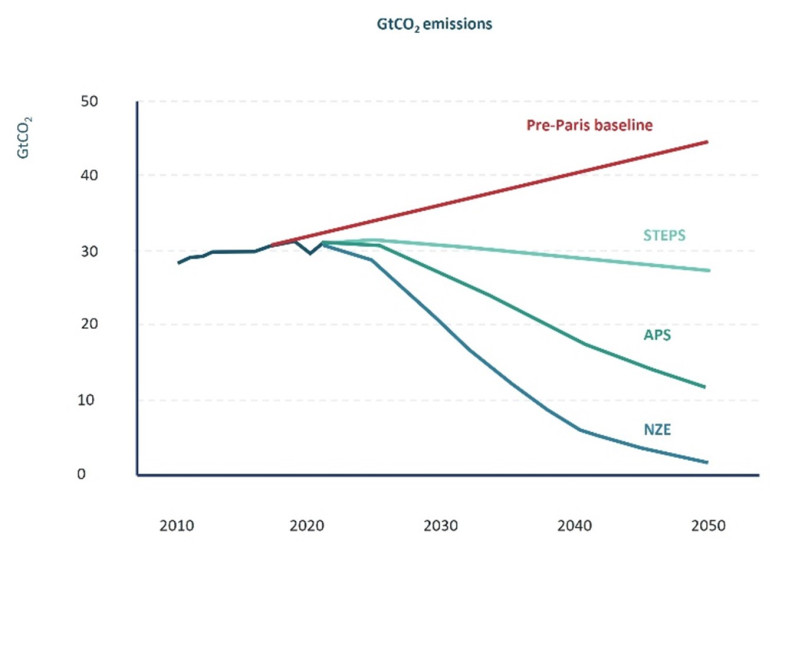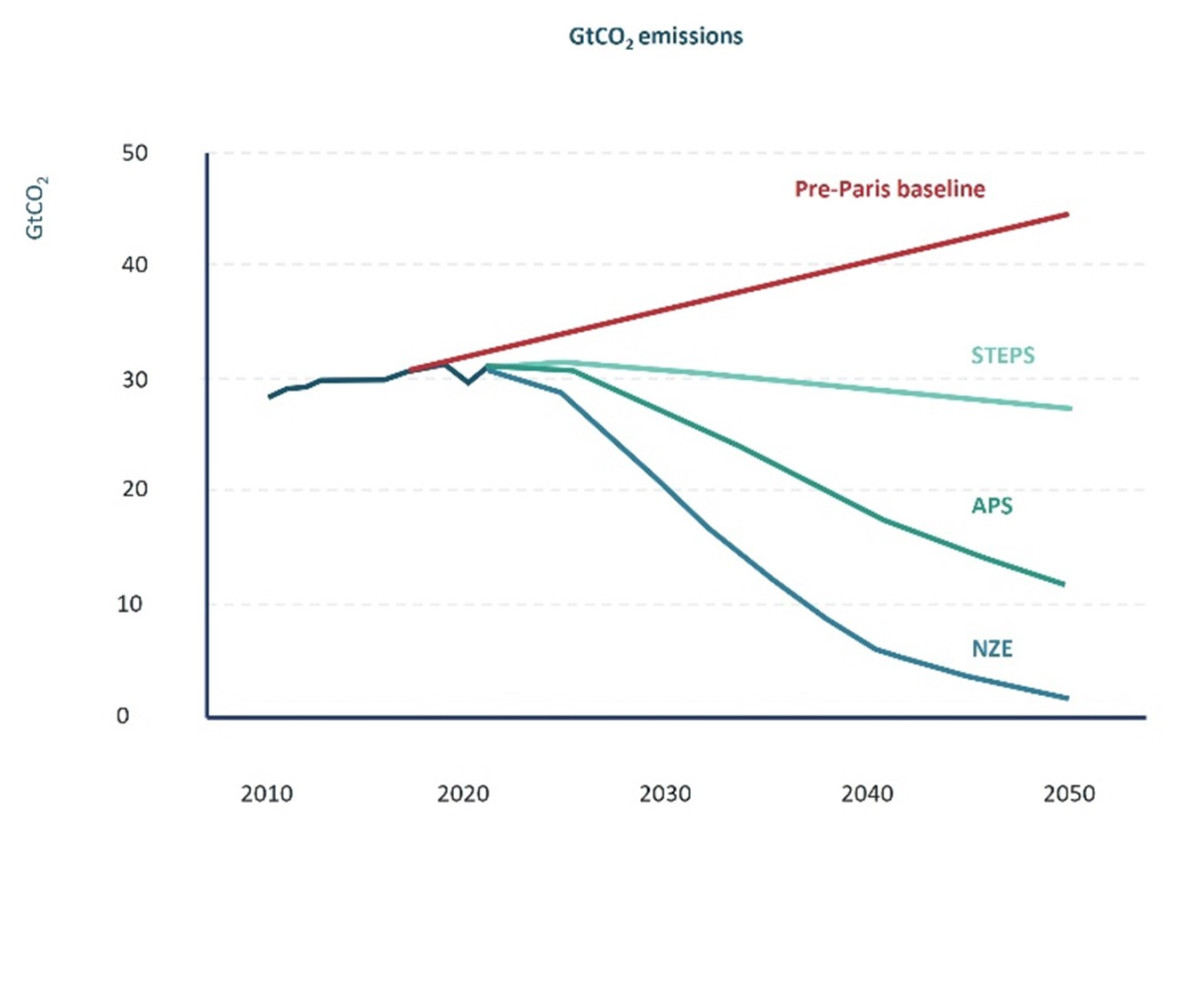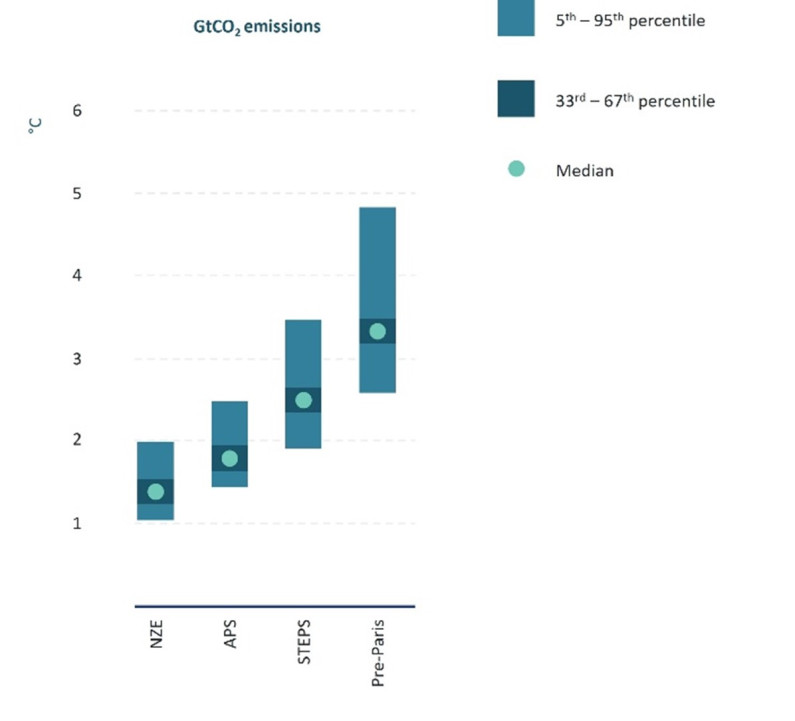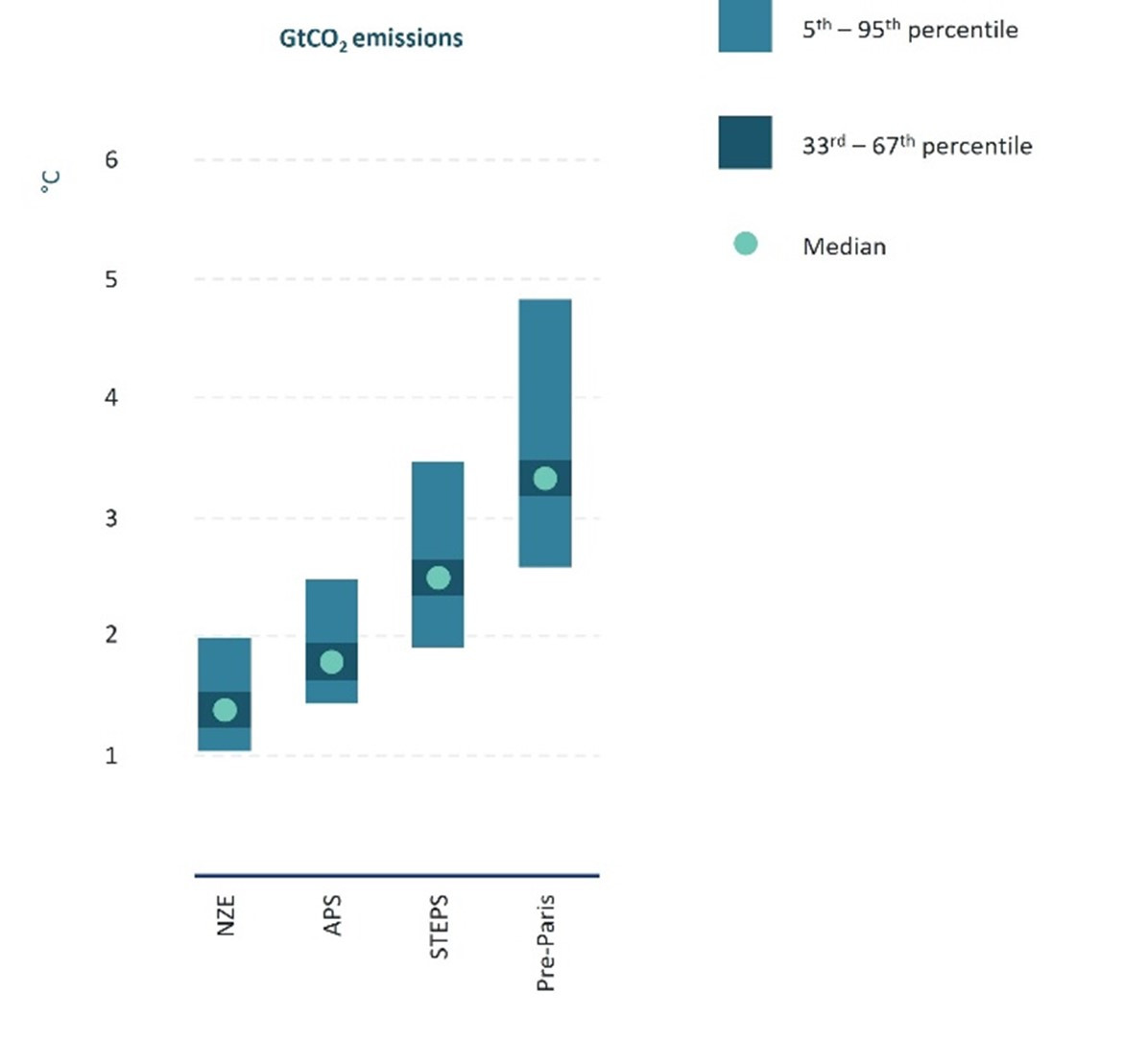See the following reports on the IEA website.
- Understanding GEC Model scenarios
- World Energy Outlook Report 2023 — an interactive online report outlining the future of energy based on three scenarios.
- Full version of the latest World Energy Outlook report
Scenario drivers
Driving forces (also known as ‘drivers’) are typically broad scale factors that influence the direction of future change. Understanding which driving forces will have the greatest influence on outcomes for your focal question is an essential step to creating climate scenarios.
- Read more about the drivers used in the IEA scenarios [IEA website]
- Read the scenarios [International Energy Agency website]
These scenarios provide a framework for thinking about the future of energy and exploring implications of various policy choices, investment trends and technology dynamics.
The scenarios are determined by input from a range of data sources such as:
- assumed economic growth
- population growth
- price of energy
- minerals and carbon
- technology costs.
The IEA scenarios describe three plausible futures for the global energy market. These scenarios will be useful if your focus question or the policy or strategy you are testing is connected to what is happening in the global energy market.
If you are developing scenarios with a broad focus, you may find it useful to align some, or all, of your scenarios with an equivalent IEA scenario. This will help create the structure of your scenarios by painting a picture of what is happening at a global scale.
As with any modelled scenarios, the IEA scenarios have limitations.
Examples include:
- The scenarios only include fuel sources that are commercially available or at an advanced stage of development. New clean fuels and technologies are not accounted for.
- Future energy service demand have to be projected based on historical data and socioeconomic drivers.
- Some aspects of the scenarios are based on the IPCC AR6 data. Read more about limitations associated with the IPCC scenarios.
For more on the limitations of climate scenarios in general see Emperor’s New Climate Scenarios – a warning for financial services from the University of Exeter [Institute and Faculty of Actuaries website].
There are three IEA scenarios, each with a different narrative and emissions trajectory.
The IEA scenarios — emissions trajectories

See information on graph below.

See information on graph below.
The IEA scenarios – degrees of warming

See information on graph below.

See information on graph below.
Net Zero emissions by 2050 (NZE)
This scenario sets out a pathway to the stabilisation of global average temperatures at 1.5°C above pre‐industrial levels. The NZE Scenario achieves net zero emissions by 2050 without relying on emissions reductions from outside the energy sector. Advanced economies reach net zero emissions before developing economies do.
The NZE Scenario also meets the key energy‐related UN Sustainable Development Goals, achieving universal access to energy by 2030 and securing major improvements in air quality. The results for the NZE Scenario are presented at the global level, with some separate indicators for advanced and for emerging market and developing economies.
Announced pledges scenario (APS)
This scenario assumes that governments will meet, in full and on time, all the climate‐related commitments that they have announced. This includes longer term net zero emissions targets and pledges in NDCs, as well as commitments in related areas such as energy access.
Under this scenario, global average temperatures will reach 1.7°C above pre-industrial levels by 2100. This happens regardless of whether commitments are underpinned by specific policies to secure their implementation. Pledges made in international fora and initiatives on the part of businesses and other non‐governmental organisations are also taken into account wherever they add to the ambition of governments.
Stated policies scenario (STEPS)
This scenario looks not at what governments say they will achieve, but at what they are doing to reach the targets and objectives that they have set out. It is based on a detailed sector‐by‐sector review of the policies and measures that are in place or under development in a variety of areas. This analysis covers relevant regulatory, market, infrastructure, and financial constraints.
The STEPS explores the current policy landscape and gives a view on where the energy system might be heading in the absence of specific new policy initiatives. As with the APS, this scenario is not designed to achieve a particular outcome. Emissions do not reach net zero and the rise in average temperatures associated with the STEPS is around 2.5°C in 2100 (with a 50 per cent probability).